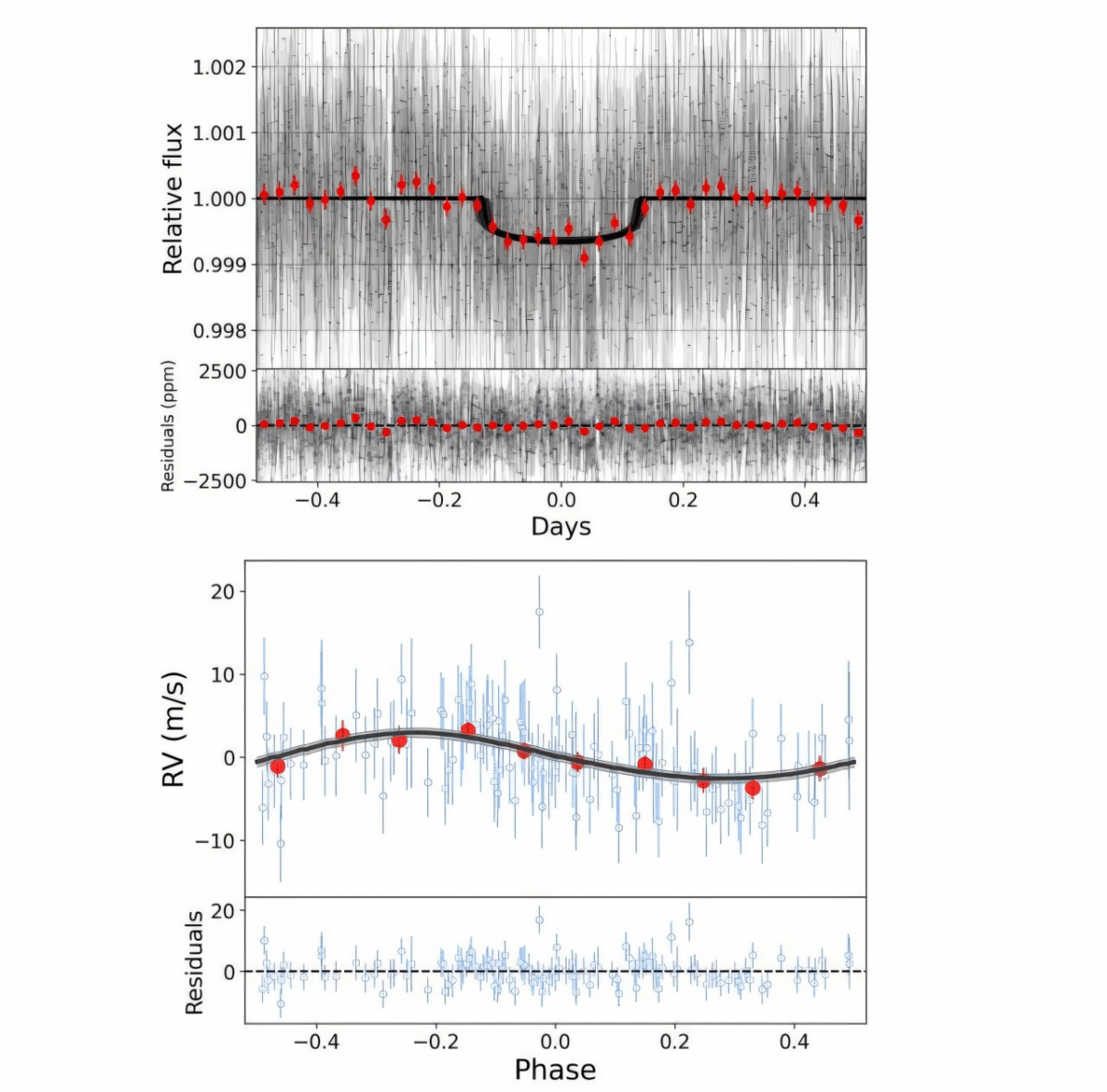Astronomers have uncovered a unique exoplanet system, revealing a surprising and rare pattern among its planets. The discovery, detailed in a research paper published on the arXiv pre-print server, challenges conventional models of planetary formation. This new finding, observed through NASA’s Transiting Exoplanet Survey Satellite (TESS), has deepened our understanding of how planets can vary in mass and size within the same system. TOI-1422, a star hosting two intriguing planets, offers a fresh perspective on how exoplanets evolve.
A Surprising Discovery: TOI-1422’s Unique Planetary System
TOI-1422, a star located relatively close to Earth, is now home to a perplexing pair of planets, TOI-1422 b and TOI-1422 c. What makes these planets remarkable is their unusual mass and size relationship, something rarely seen in the cosmos. According to the study published on the arXiv pre-print server, “Thanks to two new TESS sectors (57 and 84), an expanded RV dataset, and new RV reduction and analysis, we have confirmed the planet candidate TOI-1422 c,” providing new insights into how planets of different sizes can exist so closely together in a system.
Typically, in planetary systems, planets farther from their host stars tend to be less massive and smaller compared to their inner counterparts. However, the TOI-1422 system defies this trend. The outer planet, TOI-1422 c, is not only more massive but also smaller than the inner planet, TOI-1422 b. This inversion of mass and size is a rarity in the field of exoplanet science and has caught the attention of researchers worldwide.
A Closer Look at TOI-1422 b and c
TOI-1422 b and TOI-1422 c, although relatively close to each other in orbit, exhibit significant differences in their properties. TOI-1422 b, the inner planet, is a typical example of a low-mass planet with a larger radius. In contrast, TOI-1422 c, located farther from the star, is more massive but has a smaller radius. This unexpected mass/size combination is intriguing because it challenges the common models of planet formation, where size and mass generally correlate with a planet’s distance from its star.
“In contrast to the widely observed trend in multiplanet systems, where planet mass and radius tend to decrease with orbital period (or at least density remains constant or decreases), this system exhibits the opposite pattern: the outer planet, TOI-1422 c, is more massive yet smaller than the inner planet, TOI-1422 b. Such anti-ordered or ‘mass/density-inverted’ architectures are rarely observed,” the researchers explain in the paper.
This discovery may suggest that planetary formation isn’t as straightforward as once thought. The unusual configuration of TOI-1422 b and c prompts new questions about how planets form, migrate, and evolve in multi-planet systems. Researchers are eager to explore whether this “mass/density-inverted” pattern could be more common than previously believed.
 Phased TESS transits (top panel) and RV signal (bottom panel) of TOI-1422 c, along with the best fitted models, in black, and their residuals below each panel. The red circles represent the average of ∼ 31 minutes and ∼ 83 hours, respectively, while the gray areas represent the 1𝜎 deviation from each model. Credit: arXiv (2025). DOI: 10.48550/arxiv.2511.11492
Phased TESS transits (top panel) and RV signal (bottom panel) of TOI-1422 c, along with the best fitted models, in black, and their residuals below each panel. The red circles represent the average of ∼ 31 minutes and ∼ 83 hours, respectively, while the gray areas represent the 1𝜎 deviation from each model. Credit: arXiv (2025). DOI: 10.48550/arxiv.2511.11492
What Makes TOI-1422’s Planets So Unique?
The TOI-1422 planetary system is not only unique because of its unusual mass and size inversion but also because it provides a fresh lens through which astronomers can study planetary dynamics. In most planetary systems, planets closer to the host star tend to form faster and accumulate more mass, creating a predictable trend of larger, more massive inner planets. However, TOI-1422 c’s relatively small radius coupled with its larger mass complicates this model.
The study’s authors suggest that this unexpected planetary architecture could be the result of a process known as “planetary migration,” where planets shift their positions over time due to gravitational interactions. It’s possible that TOI-1422 c initially formed closer to the star and later migrated outward, but this theory will require further observation and analysis to confirm. Additionally, TOI-1422 b’s size and mass might have been influenced by different formative conditions, making it a valuable case study in understanding planetary diversity.
The Significance of TOI-1422 c’s Discovery
TOI-1422 c represents a significant leap in our understanding of planetary systems. While most studies focus on the habitability of planets or their potential for supporting life, the discovery of TOI-1422’s unusual architecture shines a light on the intricate processes that govern planet formation. The confirmation of TOI-1422 c’s existence, as discussed in the paper, is a milestone that will likely inspire a wave of new research, offering more clues about the diversity of exoplanetary systems.
By studying TOI-1422, scientists hope to refine models of planet formation and migration. If planets with such inverted mass/size relationships are not as rare as previously believed, they may help broaden the criteria for identifying potentially habitable planets. The presence of both small and large planets in close proximity could point to more complex systems that are worth studying in greater detail.

